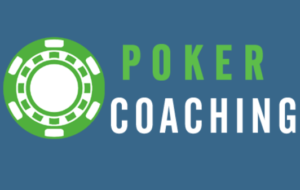







The right way to play an under pairby Jonathan Little | Published: Sep 03, '18 |
 One of my students recently told me about a hand from a $5/$10 no-limit hold’em cash game that demonstrates exactly how you should play a marginal under pair. Although he ended up losing the pot, he played it great.
One of my students recently told me about a hand from a $5/$10 no-limit hold’em cash game that demonstrates exactly how you should play a marginal under pair. Although he ended up losing the pot, he played it great.
A somewhat loose, splashy player raised to $30 out of his $1,000 effective stack from first position at a seven-handed table and our Hero with 10d-10c elected to 3-bet from second position to $90.
While calling would normally be my default play because I do not want to get 4-bet off my hand and there are lots of players yet to act, when facing a raise from a loose, splashy player, 3-betting a strong linear range for value makes a lot of sense because you can expect him to call with numerous inferior hands, such as 8-8 and Ah-9h.
Only the initial raiser called. The flop came Ks-4c-2h, giving Hero a marginal under pair. The opponent checked. The pot is $195.
This is an excellent spot to either check or bet small. If Hero checks behind, he can easily call a turn bet and can often call a river bet (assuming he thinks his opponent will somewhat frequently bet the turn and river as a bluff). Hero can also bet small in order to extract value from numerous worse marginal hade hands, like 8-8 and Ah-4h, and also to protect against various over cards, like A-J and Q-J. The main mistake many players make in this situation is to bet large, perhaps $110 or more, because then, they will usually only get called when they are beat.
Hero bet $40 and his opponent called.
While the $40 bet may seem exorbitantly small, it is perfectly fine. Do not feel as if you must make a bet that is at least as large as the bet on the previous betting round. The game is called “no-limit” for a reason. You can bet any amount, even a small one.
The turn was the (Ks-4c-2h)-3s. The opponent checked. The pot is $275.
I am again fine with either checking or betting small, perhaps $100. I typically check in this spot, looking to call most river bets. Checking behind will ensure you do not get check-raised and also allows you to easily see the showdown.
Hero checked behind. The river was the (Ks-4c-2h-3s)-10s, giving Hero a set. The opponent bet $130.
At this point, Hero has the effective nuts and should raise. While it is true that he may only get called by better hands if his opponent is weak and passive, given the opponent’s loose, splashy tendencies, it is safe to assume he will call a modestly sized raise with perhaps top pair and better made hands.
Hero raised to $330 and the opponent quickly called with 9s-8s, a flush.
Although Hero lost this hand, I think he played it well. Notice that he wins this pot every time his opponent does not backdoor a premium hand. When the opponent doesn’t (about 90% of the time), Hero will either win a small pot when his opponent gives up or a medium pot when his opponent decides to bluff. This will result in Hero printing equity in the long run.
 Thank you for taking the time to read this blog post. If you enjoyed it, please share it with your friends. If you want to continue working on your poker skills, be sure to sign up for your free 7-day trial to my interactive training site, PokerCoaching.com.
Thank you for taking the time to read this blog post. If you enjoyed it, please share it with your friends. If you want to continue working on your poker skills, be sure to sign up for your free 7-day trial to my interactive training site, PokerCoaching.com.
Be sure to check back next week for another educational blog post. Thanks for reading!